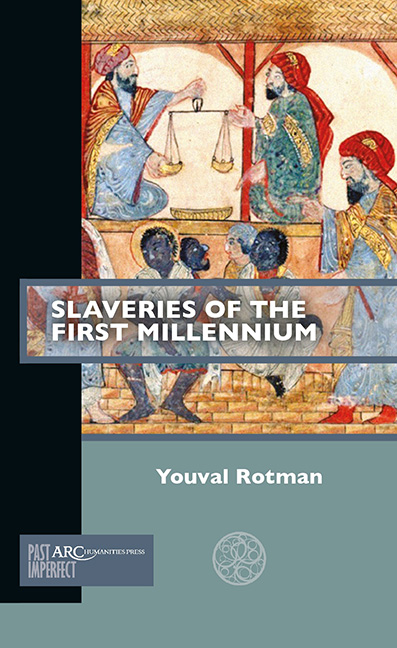Book contents
- Frontmatter
- Contents
- Introduction: Whence Slavery?
- Chapter 1 From Present to Past and Back
- Chapter 2 Slavery between Two Phenomena: Empire and Christianity
- Chapter 3 Enslavement, Captivity, and the Monotheistic Turn
- Chapter 4 New Polities, New Societies, New Economies
- Chapter 5 Migration, Integration, Connectivity
- Conclusion: Slavery as Historical Process— Towards a New Definition
- Further Reading
Chapter 5 - Migration, Integration, Connectivity
Published online by Cambridge University Press: 13 January 2022
- Frontmatter
- Contents
- Introduction: Whence Slavery?
- Chapter 1 From Present to Past and Back
- Chapter 2 Slavery between Two Phenomena: Empire and Christianity
- Chapter 3 Enslavement, Captivity, and the Monotheistic Turn
- Chapter 4 New Polities, New Societies, New Economies
- Chapter 5 Migration, Integration, Connectivity
- Conclusion: Slavery as Historical Process— Towards a New Definition
- Further Reading
Summary
In the previous chapter we saw different uses medieval societies made of enslaved people. Slavery became important in institutionalizing personal forms of control that sustained the social, economic, and also the political system of medieval societies and contributed to their development. The medieval world systematized enslavement in different ways and for different ends. We examined specific and localized forms of enslavement, but also revealed their common traits. The enslaved were employed in diverse, versatile, and flexible ways. The adaptability of forms of enslavement to changing circumstances made it useful for social change. The result were distinct medieval forms of slavery, fundamental to the social structure, system, and organization of medieval soci-eties. Social dynamics had become dependent on forms of enslavement. This is why we understand slavery as a historical process and why we refer to it using the plural form.
And yet, medieval economies, societies, and cultures were connected. The question of connectivity is all the more pertinent because medieval slaveries depended on the enslavement of foreigners and their integration as dominated subjects. How did these systems of migration and integration function? How did they connect one to another despite being distinct and diverse? The present chapter develops a global perspective in order to complete the local perspective adopted in the previous chapter. It explores the ways in which medieval slaveries formed a coherent system that connected societies, economies, and polities. Slavery proves to be a historical process also in its role as a means of connectivity. But this role cannot be examined without taking into account the fact that the enslaved did not play this role out of free will. Human beings who were kidnapped, coerced, and trafficked found themselves forcibly migrated away from their homes and families. The role of slavery as a historical process in the development of the societies of the first millennium was carried out on the back of its victims, enslaved women, men, and children. How can we begin to grasp slavery from their point of view? As we shall see, perceiving the enslaved as coerced migrants, forcibly dislocated, trafficked, and integrated into an enslaving environment will help us to study the terrible psychological impact of the system of slavery.
The slave trade, forced migration, coercion, and human trafficking have all played a terrible role in the long history of humanity.
- Type
- Chapter
- Information
- Slaveries of the First Millennium , pp. 93 - 120Publisher: Amsterdam University PressPrint publication year: 2021



